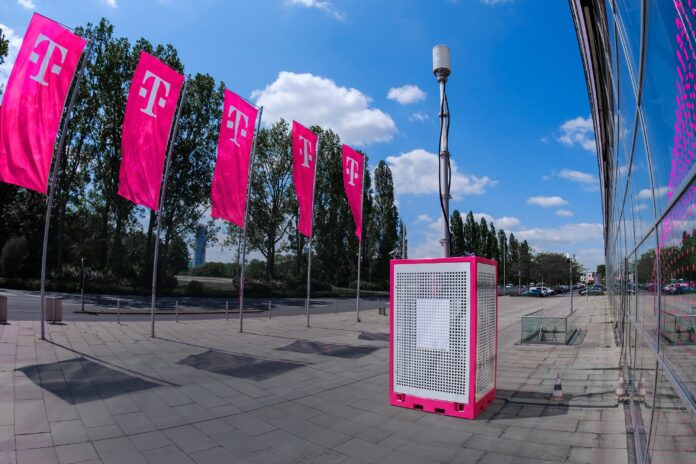The solution for 4G and 5G has been tested in construction and property development, logistics and for emergency situations
Deutsche Telekom (DT) has provided an update on the progress of its cell tower in a box, showcased at the Digital X event in Germany last September. DT describes it as a “more flexible temporary mobile communications solution for company premises, large construction sites, and events”. The operator says it will be launched commercially in the coming months.
Thinking outside the box
According to DT, the entire solution fits into a micro container that is 1.6 metres long, 2 metres wide and 2.6 metres high, meaning it takes up little space when deployed and is easy to move. Apparently it can be set up by one person in less than an hour. The height and orientation of the mobile mast can be adjusted.
The micro container can be connected to the electricity grid or a mobile energy source. Users can connect to the data network via fibre as well as mobile radio.
The “ultra-mobile mast” prototype was developed by two Deutsche Telekom employees who wanted a more efficient way to provide coverage at festivals, major events and in natural disaster areas. Its first live try-out was in August 2023 at the Nibirii Festival in Düren, Germany, attended by more than 30,000 fans of electronic music.
Since then, the German operator says it has successfully trialled a prototype with 12 companies in industries including the Swiss construction and property firm Implenia.
Building bridges
Now DT is to provide 4G and 5G coverage for Implenia two years during construction of a bridge in Bad Lobenstein as the valley has no network coverage.
It also worked with Kolbenpost, a food and drinks delivery firm in Munich and will now provide 5G coverage in its logistics hall. This type of site is typically difficult to provide communications for due to the concrete and steel construction, and permanent cabling is expensive.
The solution provides telephony services for the team and plug and play “intralogistics applications” such as smartphone apps for storing goods or picking via hand scanner. The aim is to ensure orders are dispatched in the shortest possible time.



